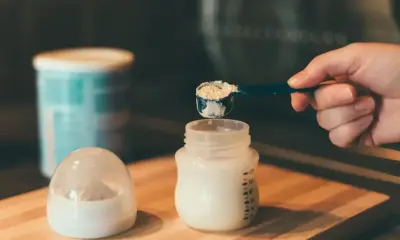Breastfeeding & Baby Feeding
How to Pick the Best Bottle Nipple Size and Flow

Choosing Best Bottle Nipple: A Parent’s Guide to Selecting the Right Fit for Your Baby
When it comes to feeding your baby, choosing the best bottle nipple is a crucial decision. Baby bottle nipples come in various sizes, designed to meet your baby’s changing needs. Each nipple is tailored to support your baby’s developmental stage, helping to ensure that they feed comfortably and safely. So, how do you know which one is right for your little one? In this guide, we’ll break down everything you need to know about Choosing Best Bottle Nipple for your baby’s needs.
What Are Nipple Levels and Why Do They Matter?
Nipple levels refer to the flow rate of the nipple, indicating how quickly milk or formula passes through the bottle. Nipple levels vary to match your baby’s growing appetite and feeding habits. Understanding nipple levels is essential because the wrong size can lead to feeding challenges. Here’s a general guide to help you understand what each nipple level represents:
- Level 0: Preemies or newborns (0-3 months)
- Level 1: Newborns (0-3 months)
- Level 2: Babies (3-6 months)
- Level 3: Babies (6+ months)
- Level 4: Babies (9+ months)
As your baby grows, their needs evolve, and Choosing Best Bottle Nipple involves selecting a nipple that aligns with their developmental milestones. Babies typically need a slower flow at first, but as they grow, they will require a faster flow to match their increased feeding speed.
Signs It’s Time to Upgrade Your Nipple Size
Knowing when to change your baby’s bottle nipple size can be tricky. Here are a few signs that your baby might need a faster-flow nipple:
When to Level Up Your Nipple
- Frustration: If your baby is sucking too aggressively, the nipple might invert, or feedings take longer than usual.
- Sleepy During Feedings: Babies may fall asleep at the bottle if the flow is too slow, even if they’re still hungry.
- Signs of Hunger: If your baby seems hungry soon after feeding, it may be time to switch to a faster nipple.
When to Level Down Your Nipple
- Milk Spills: Milk spilling from your baby’s mouth during feedings indicates the flow is too fast.
- Gagging or Coughing: These are signs of an overwhelming flow rate that may lead to choking.
- Gas or Discomfort: Drinking too quickly can cause discomfort due to air swallowing, resulting in gas and fussiness.
These are key indicators that Choosing Best Bottle Nipple for your baby may require adjusting to match their current feeding needs.
Bottle Nipple Sizes for Nursing Babies
If you’re introducing a bottle to a breastfeeding baby, it’s important to start with a Level 1 nipple, regardless of their age. This ensures that the flow rate matches the effort required for breastfeeding. Babies used to breastfeeding may struggle with fast-flow nipples, which could make them prefer the bottle over nursing. To avoid this, opt for nipples that closely mimic the natural flow of breast milk.
For breastfeeding babies, slow-flow nipples allow them to maintain the rhythm they’ve established during breastfeeding. This helps prevent nipple confusion and ensures a smooth transition between the breast and bottle.
Choosing Best Bottle Nipple for Your Baby’s Comfort
To ensure your baby’s comfort and safety during feedings, keep the following tips in mind when Choosing Best Bottle Nipple:
- Age and Developmental Stage: Choose a nipple based on your baby’s age, but always pay attention to their feeding cues. Every baby is different, so use the chart as a guideline, not a strict rule.
- Material and Shape: Nipples come in various materials (silicone, rubber) and shapes. Experiment to find the one that your baby prefers, as comfort plays a large role in feeding success.
- Nipple Features: Some nipples have anti-colic features to reduce gas and discomfort, while others offer angled designs for ease of feeding. Choose a design that suits your baby’s needs.
Conclusion: Make the Right Choice for Your Baby
In conclusion, choosing the right bottle nipple is essential to your baby’s feeding experience. Whether you’re starting with a newborn or transitioning from breastfeeding, the right nipple ensures smoother, more enjoyable feedings for both you and your baby. Pay attention to your baby’s cues and use the information provided here to help guide your decision.
For more insights and tips on baby care, be sure to explore more news on this website!












